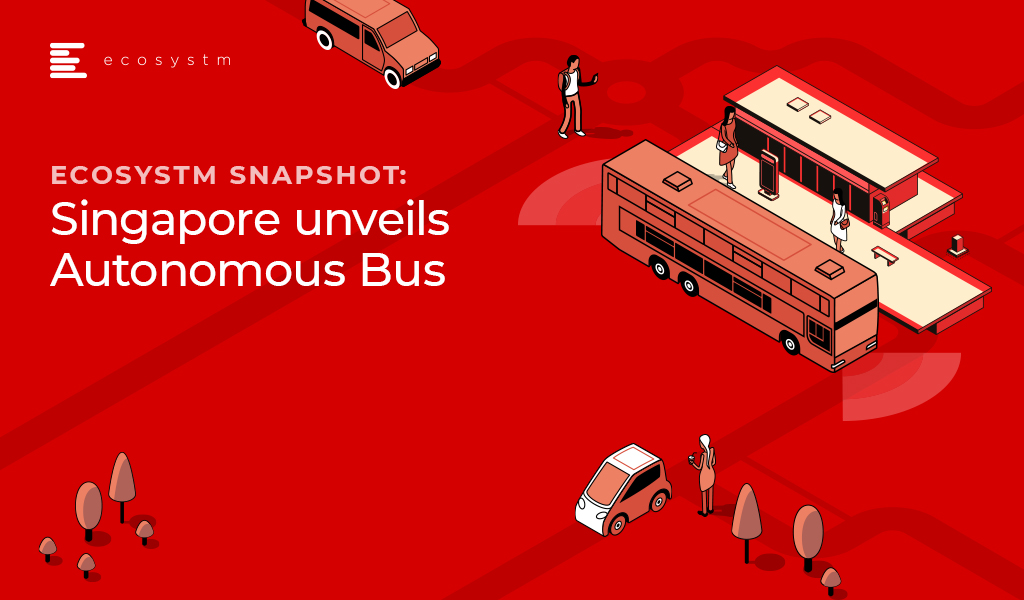
Autonomous vehicles are a natural component of any smart city/smart transportation strategy. City traffic congestion is a well-known problem that can make or break the reputation of a city as being a liveable place. Any major initiative that makes moving the public from one point to another in the most efficient manner is good for everyone.
Singapore has always taken steps to improve public transport and provide a viable alternative to owning a vehicle. These initiatives are renowned worldwide, and Singapore’s public transport and road management held up as best practice globally. To enhance commuters experience Singapore has already introduced smart bus stops a year ago and in the future, we may see a complete ecosystem of smart bus stops.
Following a similar theme, a number of projects have been announced in the last few years to take public transport to the next level. Singapore is also embracing autonomous vehicles, with a number of initiatives launched over the last few years. Singapore’s Nanyang Technological University (NTU), and Volvo Buses in partnership with Singapore’s Land Transport Authority (LTA) have launched the world’s first full-size autonomous electric bus stretching 12 metres long with a capacity of around 80 passengers. As a part of public trials, the bus is being tested on fixed routes and services will subsequently extend to the public roads.
The buses are equipped with autonomous driving functionality and provide a quiet, emission-free operation and save up to 80% energy compared to an equivalent sized diesel bus. The bus has advanced features such as light detection and ranging sensors (LIDARS), 3D stereo-vision cameras, and an advanced GPS system that uses real-time kinematics which are connected to an inertial management unit (IMU) to measure the lateral and angular and help in navigation over varied terrains.
Real-world concerns for autonomous buses
The bus has undergone preliminary rounds of rigorous testing at the Centre of Excellence for Testing and Research of Autonomous vehicles at NTU (CETRAN). Confirming maximum safety and reliability, the AI system in the bus is protected with industry-leading cybersecurity measures. Speaking on the subject, Ecosystm’s Executive Analyst, Vernon Turner says that “While safety will always be the leading concern, software and hardware security and reliability will be the underpinning forces that make passengers comfortable with autonomous vehicles. The autonomous vehicle’s ecosystem is complex because the reliability of the vehicle is as much an IT and telecom function as it is an industrial manufacturing process.”What
What do Autonomous buses mean for the industry and how will it benefit the industry?
In most cities, public transportation is conducted in ‘restricted’ lanes (especially for buses), and therefore the routes are often consistent, and the operating environments can be continually monitored and matched for exceptions. The legislation for autonomous vehicles has to be carefully crafted to ensure the highest level of public safety while not stifling innovation.
“The digital impact of autonomous buses opens up a host of new services both for the transportation companies as well as the passengers. I wouldn’t be surprised to see transportation companies being sold public transportation vehicles such as buses as ‘buses as a service’ whereby the vehicles are managed in a 100% OPEX manner and have no CAPEX value! There will be a rich source of operational data from IoT-based sensors that the suppliers and the transportation companies will agree to pay for multiple usage metrics,” Says Turner. “Innovation will also appear in the transportation workflow – thus creating investment in real-time mapping, high-speed telecom networks, and in the case of an ‘EV’ or electric bus, the charging/recharging energy network. As the IT infrastructure is implemented, I would anticipate efficiencies in bus usage would increase with better route management. Passengers, buses and the routes become integrated into a better passenger and city life experience.”
To that end, the industry is excited to use public transportation for their autonomous vehicle programs.
Environmental Impact of autonomous buses
The government of various nations is spending enormous amounts on reducing emission and buses are inherently inefficient when it comes to diesel consumption, only getting between 1 to 4 kilometres/litre. “Switching them to electric vehicles while at the same time running them as autonomous vehicles in a very efficient manner could have a marked impact on the environment,” says Turner. “While the heavy workload for buses might quickly drain any EV batteries, having them work in a fully autonomous, dedicated bus lane should mitigate that energy cost. This could make it a feasible alternative to combustion engine vehicles while at the same time being highly friendly to the environment.”







I’m enjoying the information and will be tweeting this to my followers! Wonderful blog and amazing design and style.